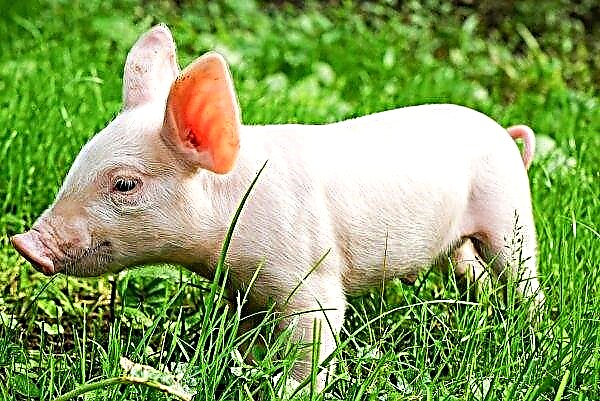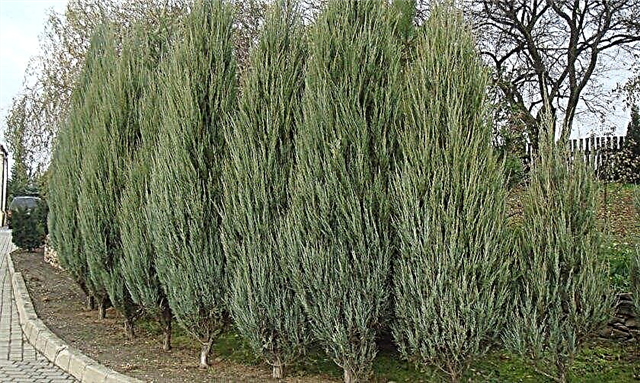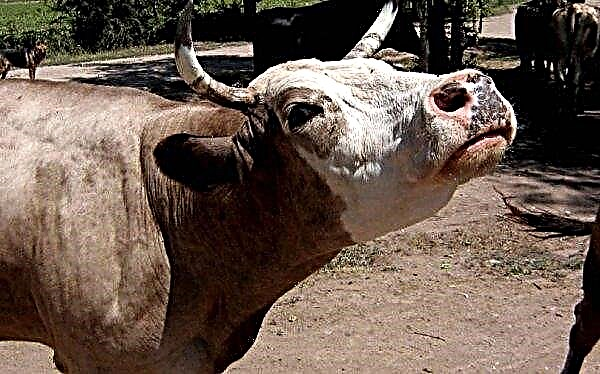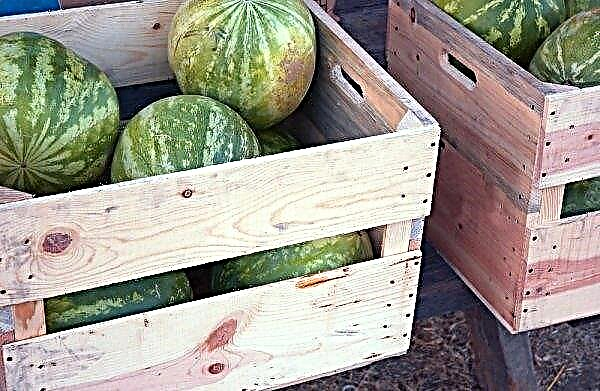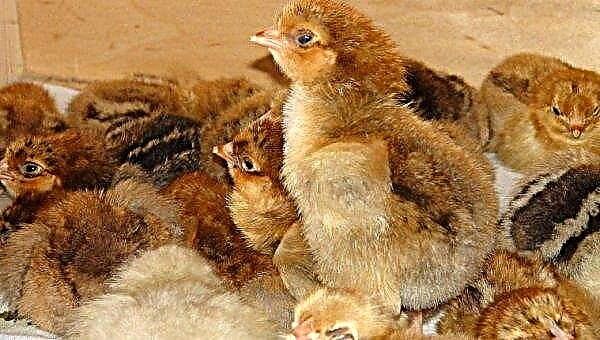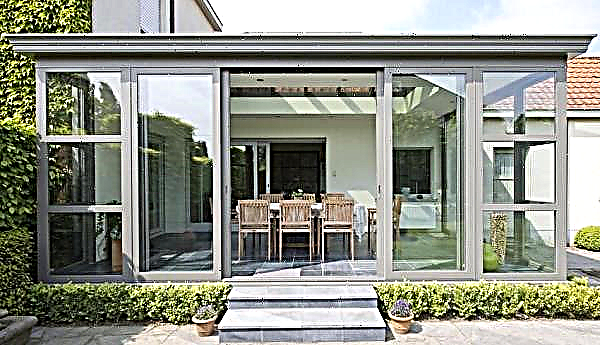Catching wild bees is always not only profitable, but also a useful activity. With it, you can get useful insects for free, as well as save them from death. In the future, in just 1-2 years, a full-fledged productive apiary can develop from a small bee swarm. This article will examine in detail how to make homemade bee traps from improvised means and what is needed for this.
Did you know? Bees are one of the oldest inhabitants of the planet, according to archaeological finds, these insects existed long before the appearance of man, about 100 million years ago.
What is a bee trap?
Under the insect trap in beekeeping, it is customary to mean a variety of devices from natural and artificial materials aimed at the bait of wild and stray bees. Such traps can have a variety of shapes, but most often they are square or rectangular boxes (spawners) made of PPP (expanded polystyrene) or plywood. Also, they are often made from logs of the most common tree species in the region, in which case they acquire a cylindrical shape. Inside each box, a cavity of 5 frames is created, however, space is often provided for 6 or even 8 frames at all.
Also, they are often made from logs of the most common tree species in the region, in which case they acquire a cylindrical shape. Inside each box, a cavity of 5 frames is created, however, space is often provided for 6 or even 8 frames at all.
This improves the efficiency of the trap, because when searching for new hives, insects often stop only on the largest structures. Each trap has only one entrance with a pre-installed deadbolt. After the bees populate the hive, the bait is closed, and the insects are transferred to the apiary.
Did you know? Beekeeping is one of the oldest economic branches of mankind. Despite the fact that the first hives appeared only in the 7th – 8th centuries. BC e., primitive man successfully extracted honey.
How to make a trap for bees with your own hands
The bait for a young swarm can be made of any improvised materials. In addition, it can even be made from well-dried logs, but in this case it will require not only high-class carpenter skills, but also a lot of time, so the simplest, but at the same time effective method of erecting the structure will be considered below.
Preparation of materials
To create a simple and reliable house-trap you will need the following set of materials:
- plywood with a thickness of at least 4 mm - 10 m²;
- wooden beam 40 × 40 mm - 3 m;
- mounting rail 15 × 30 mm - 3 m;
- bolt flat, metal - 1 pc.;
- roofing material (galvanized sheet, roofing material, slate, etc.) - 1.8–2 m²;
- paint or drying oil - 1 l.
Important! After painting, the house must be ventilated for at least 1 month, only in this case it is possible to completely eliminate uncharacteristic odors.
Dimensioning and drawing creation
Before the construction of the structure, it is necessary to clearly determine how far from the apiary the trap will be located, so its volume and size depend on it. When an apiary is located near forests and meadows, it is made quite large, not less than 8 hundred. Such structures are created in the form of two-tier structures, which makes it possible to catch several families at once. But, if there is no suitable place for its installation near, the houses are made mobile, in one tier. A small trap will allow you to instantly move it to the right place, without any effort. In addition, it can safely provide insects with a volume of about 50 liters, which allows you to install in a capacity of up to 8 hundred.
But, if there is no suitable place for its installation near, the houses are made mobile, in one tier. A small trap will allow you to instantly move it to the right place, without any effort. In addition, it can safely provide insects with a volume of about 50 liters, which allows you to install in a capacity of up to 8 hundred.
To do this, the house needs to be made in the form of a regular rectangular parallelepiped, while the following dimensions of the sides of the structure should be provided:
- side walls - 51 × 50 cm;
- end walls - 51 × 20 cm;
- bottom - 51 × 20.8 cm;
- covers - 54 × 23.8 cm.
Important! The new family must be protected from thieves from the next apiaries, otherwise a larger family can completely destroy it.
Step-by-step instruction
To create a trap correctly, you must follow the following sequential steps:
- Prepare all the elements of the future structure, for this, according to the previously designed dimensions, from plywood, you need to cut two side and end walls, the bottom, and also the top. Next, a wooden beam is cut into 4 segments of 47 cm, 4 segments of 16 cm and 2 segments of 45 cm. From the mounting rail, you need to create 2 blanks of 20.8 cm and 2 of 54 cm.
- Create the base of the frame from the timber, for this you need to connect 2 long (47 cm) and 2 short (16 cm) segments into a regular rectangle.
- In the corners of the base perpendicular to the beam, fasten short segments of 16 cm in length.
- Create the crate of the future roof. To do this, you need to connect 2 long (47 cm) and 2 short (16 cm) segments into a regular rectangle, and then attach it to the previously created structure parallel to the base.
- To improve the durability of the structure, segments of 45 cm strengthen the front and rear walls. To do this, they are mounted with one edge to the upper contact point of horizontal and perpendicular racks, and the other to the opposite, in the lower part of the structure.
- Upholst the resulting frame with wall panels, starting from the bottom and ending with the side.
- To equip the roof, you need to knock together the mounting rail into a rectangle, and then fix it in the center of the roof panel. The top of the lid must be covered with roofing material, and then be sure to seal all the seams of the roof. This ensures the durability of the structure and protects the bees from precipitation.
- In the lower edge of the front end, you need to make a rectangular hole 1 × 10 cm and install a bolt over it. After that, you can put honeycombs in the house, and close it with a lid. To do this, you must first install the folds, which will become the main support for the frames.
Video: how to make a trap for bees with your own hands
Most often in specialized forums, many beekeepers ask whether traps should be painted, and what color and paint should be used. As you know, bees react quite negatively to a variety of smells and toxic substances, which can scare them away from a new house, so it’s best to use natural drying oil for painting. You can replace it with paints of a natural color (green, gray, brown). At the same time, it is imperative to abandon Chinese manufacturers and pay attention to more expensive, environmentally friendly paints.
Where to set bee traps
Most experienced beekeepers have many secret places, the installation of a trap in which almost always guarantees the capture of insects. Often, bees migrate along long-established, safe routes, often this is the result of a special smell of the area, which attracts a swarm. But for beginning beekeepers, the choice of a place becomes a real problem, on the solution of which the expediency of traps depends.
To find the perfect place, it is imperative to take into account the fact that in the search for a new home, the swarm often goes to fairly distant distances from the old house. He is looking for a free place away from competing families and in close proximity to flowering fields and other plantations, so the trap must be installed far from apiaries, at a distance of at least 3 kilometers.
In addition, they are installed outside the settlements: their noise, electromagnetic radiation and pollutants emitted by people often scare away insects. It should be noted that the installation of traps near large lakes is also useless, since bees fly into such places quite rarely. An ideal place to capture a young family is considered to be a flowering meadow or territory near forest groves. It is best if such a site is located near a small flowing body of water. Insects always visit such places in search of food, which guarantees their capture.
An ideal place to capture a young family is considered to be a flowering meadow or territory near forest groves. It is best if such a site is located near a small flowing body of water. Insects always visit such places in search of food, which guarantees their capture.
What time is better to set a trap
In addition to a successful place, it is imperative to determine the most productive time for settling traps. Bees often leave their residence once during a swarm. During this process, a large swarm is divided into one or more families that fly away from home to populate new, uninhabited territories.
Most often, this period begins at the end of May, with the advent of a huge number of various flowering plants, which is why traps are set precisely in this period. However, this should not be done in advance or in the summer, the chances of catching bees in another period of the year are almost zero, but the probability of settling the trap with wasps, hornets or ants is increasing rapidly. In this case, expelling them from the house often brings a lot of difficulties.
How to catch a swarm of bees in an empty hive
The right place and trap is not the key to catching bees, these insects are quite whimsical, so luring a new swarm in the apiary will not be easy. These insects do not tolerate the artificial smell, while flying with pleasure to the sources of honey and other bee products, therefore, on the basis of honey, propolis and other things, you need to create a bait. To do this, bee products need to thoroughly wipe the honeycomb and the inner walls of the house. In addition, thick sugar syrup can be used as bait, with which the honeycomb is abundantly covered. In the natural environment, bees like to settle in hollows of trees, away from the ground, so this feature should definitely be taken into service. The trap should be mounted on a tree at a height of at least 3 meters.
To do this, bee products need to thoroughly wipe the honeycomb and the inner walls of the house. In addition, thick sugar syrup can be used as bait, with which the honeycomb is abundantly covered. In the natural environment, bees like to settle in hollows of trees, away from the ground, so this feature should definitely be taken into service. The trap should be mounted on a tree at a height of at least 3 meters.
However, this place must be in comfort, away from drafts. After insects appear near the house, it is not worth starting its transportation. Often the first settlers are scout insects, the purpose of which is to choose the most suitable place for the herd, so their appearance does not always indicate luck. Trap transfer should be approached only when the family has settled, it often takes at least a month, after the appearance of scouts.
To transfer the hive to the apiary, you must adhere to several rules:
- Do this only in the evening, after sunset. This measure is mandatory, since in the daytime most of the insects are outside.
- Transportation of the trap should occur instantly, neglect of this rule can cause serious stress for insects and provoke the death of part of the herd.
- When working with insects, they must be protected from sharp odors (perfume, gasoline, detergents, etc.), as this causes them fury.
 A bee trap is not only a necessary, but also quite profitable thing in an apiary. It allows you to avoid unnecessary spending on the herd and bring significant benefits to the ecosystem. Today, there are many models of such devices, but it is more profitable to create it yourself. This will require minimal skills in construction and improvised materials.
A bee trap is not only a necessary, but also quite profitable thing in an apiary. It allows you to avoid unnecessary spending on the herd and bring significant benefits to the ecosystem. Today, there are many models of such devices, but it is more profitable to create it yourself. This will require minimal skills in construction and improvised materials.


